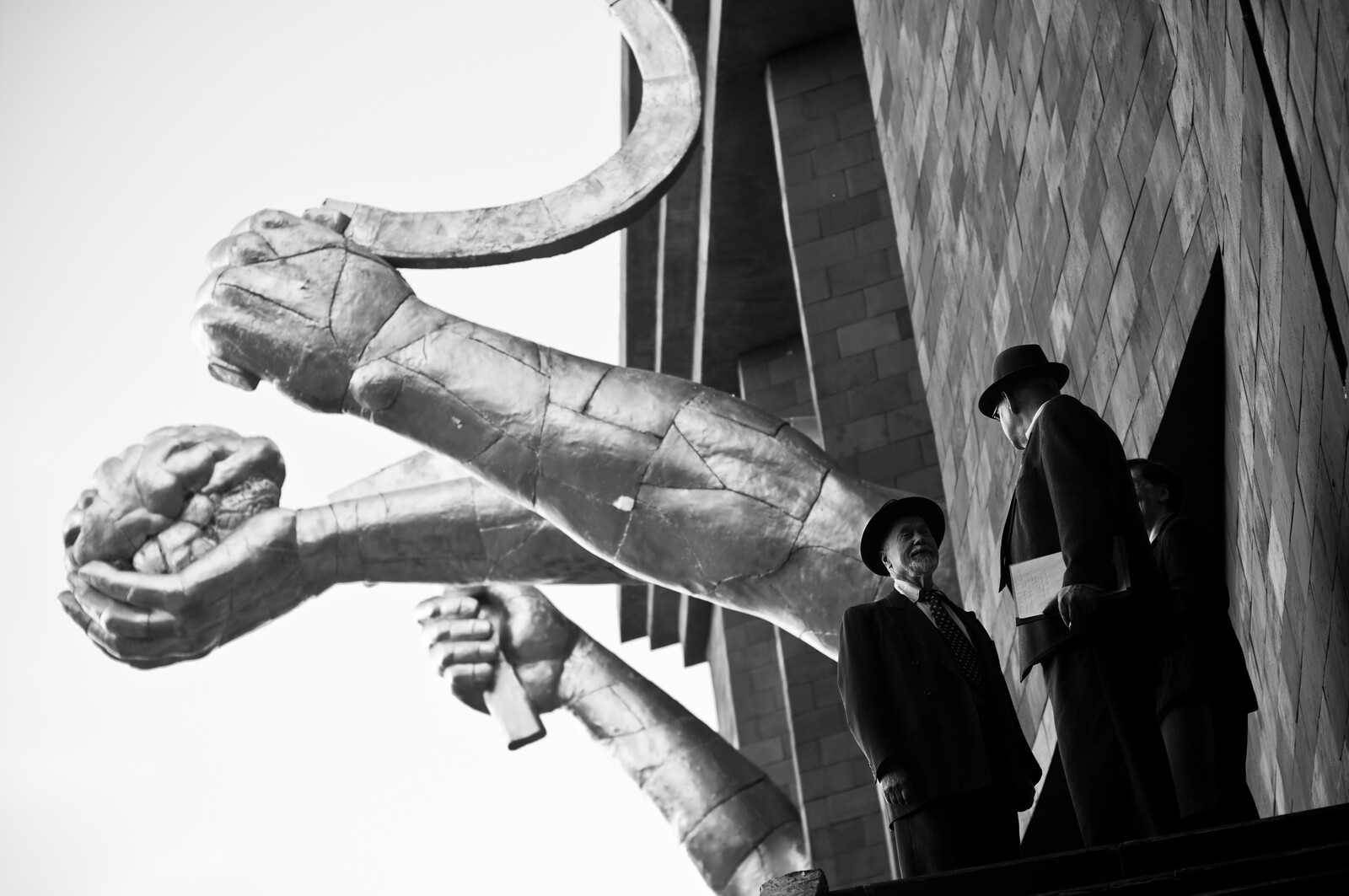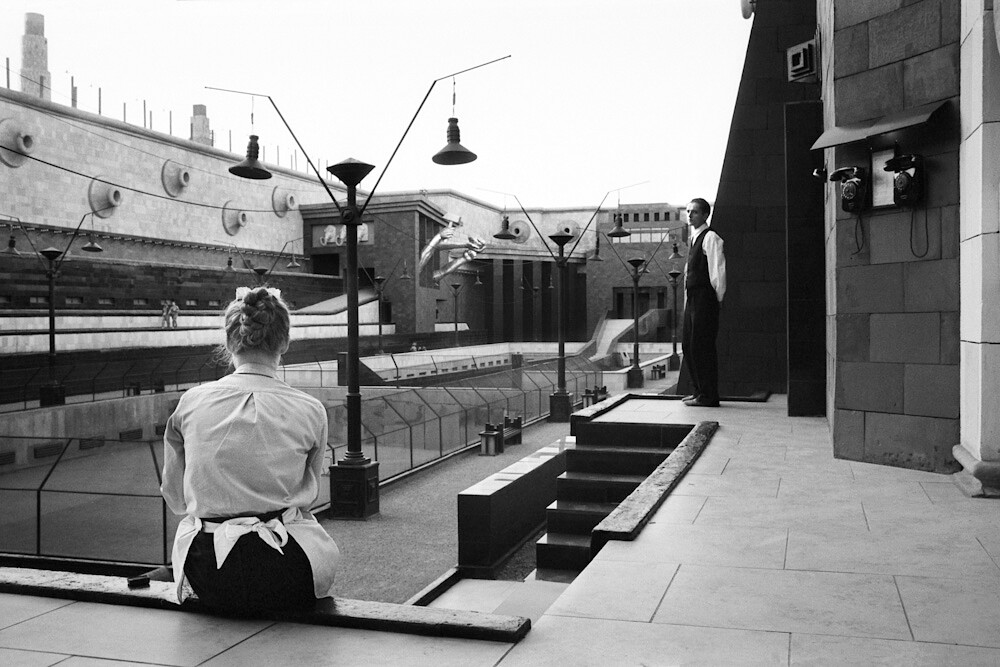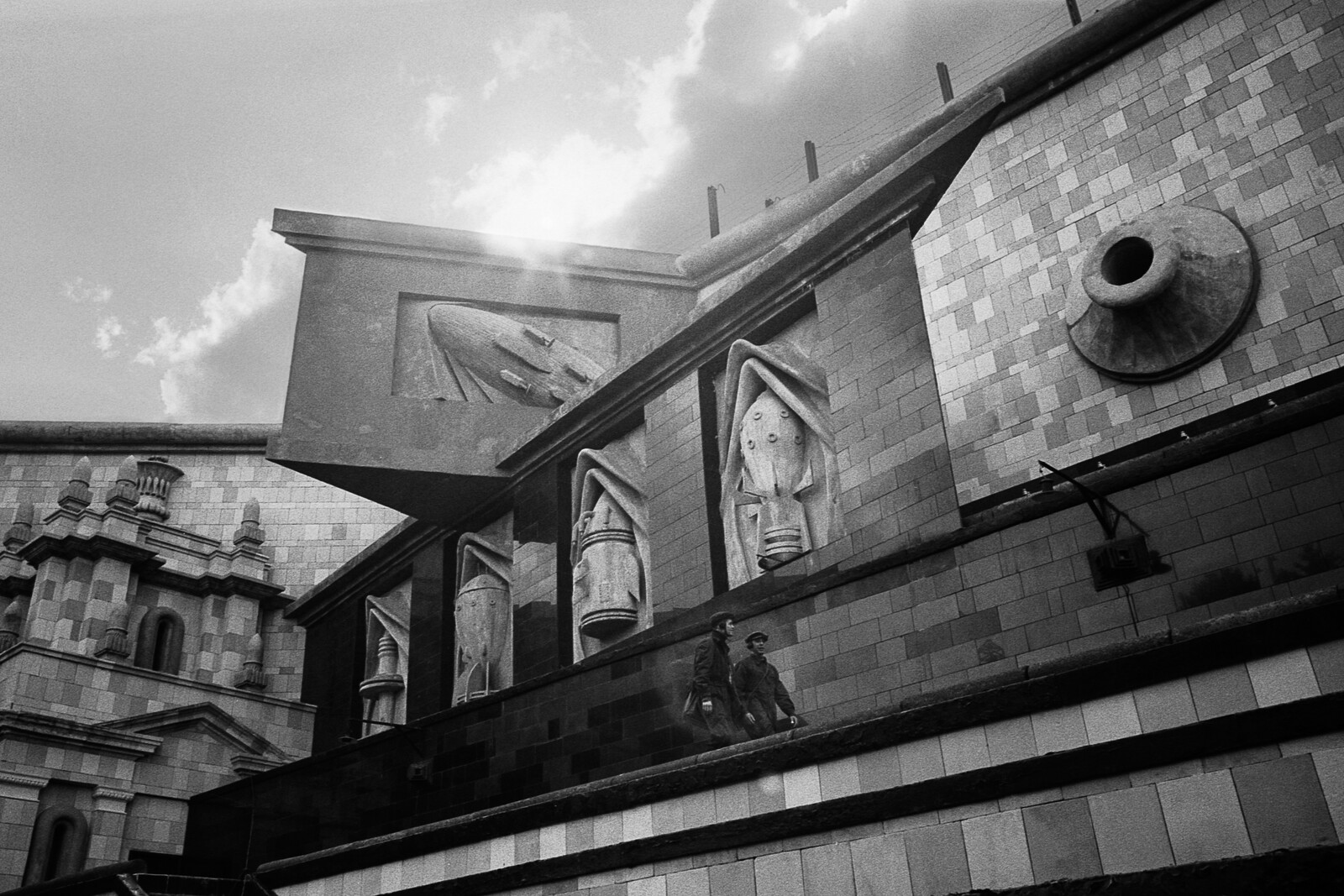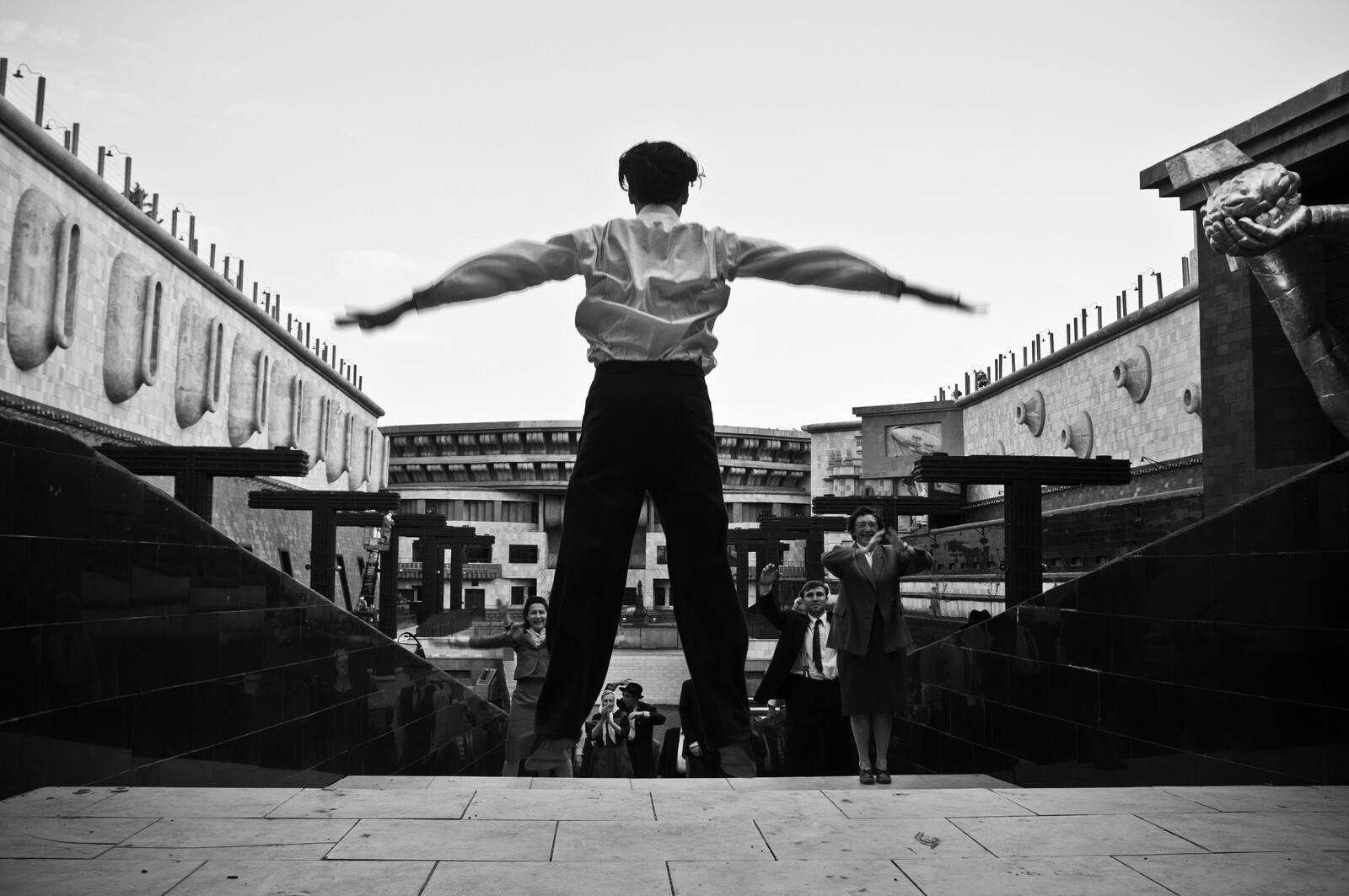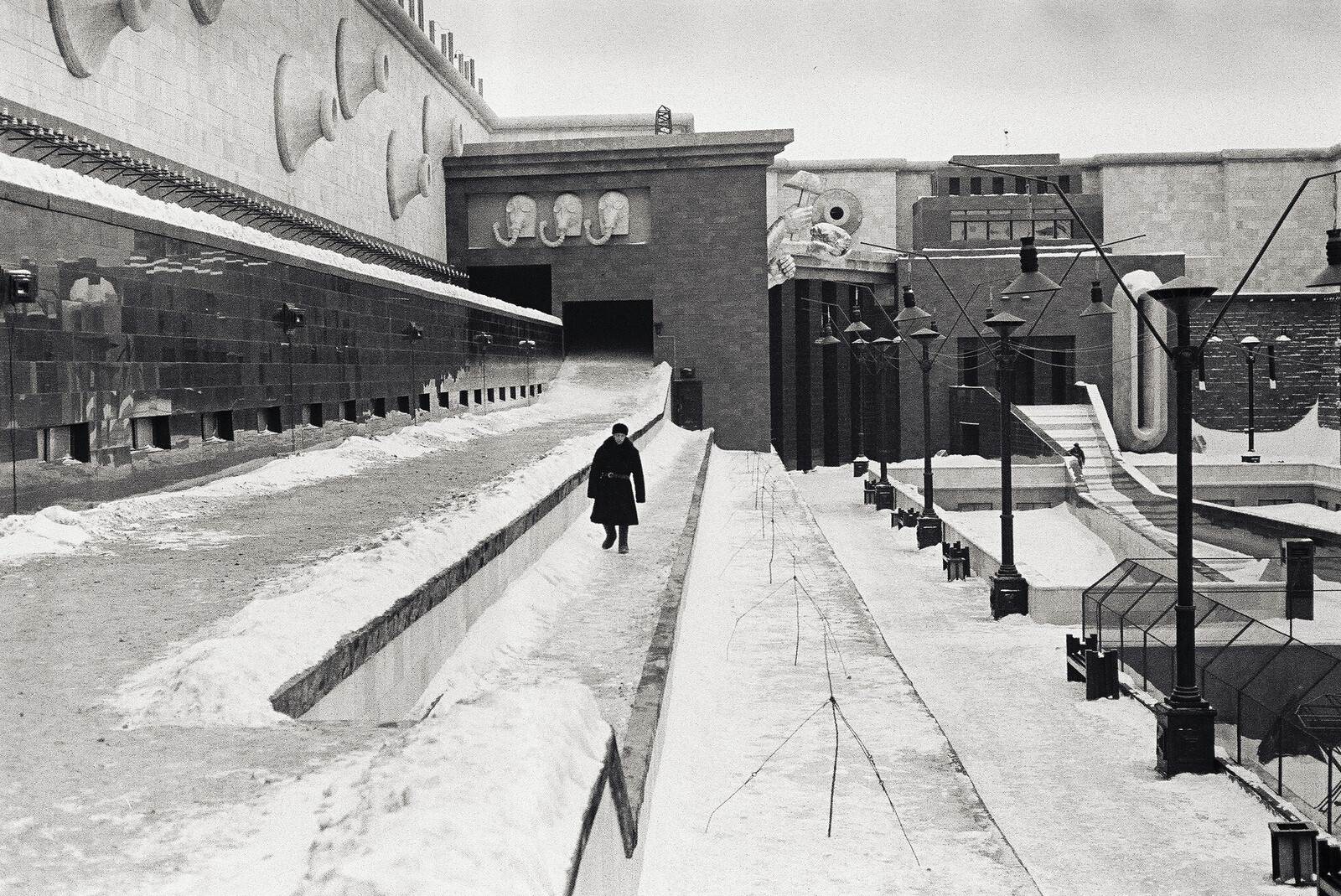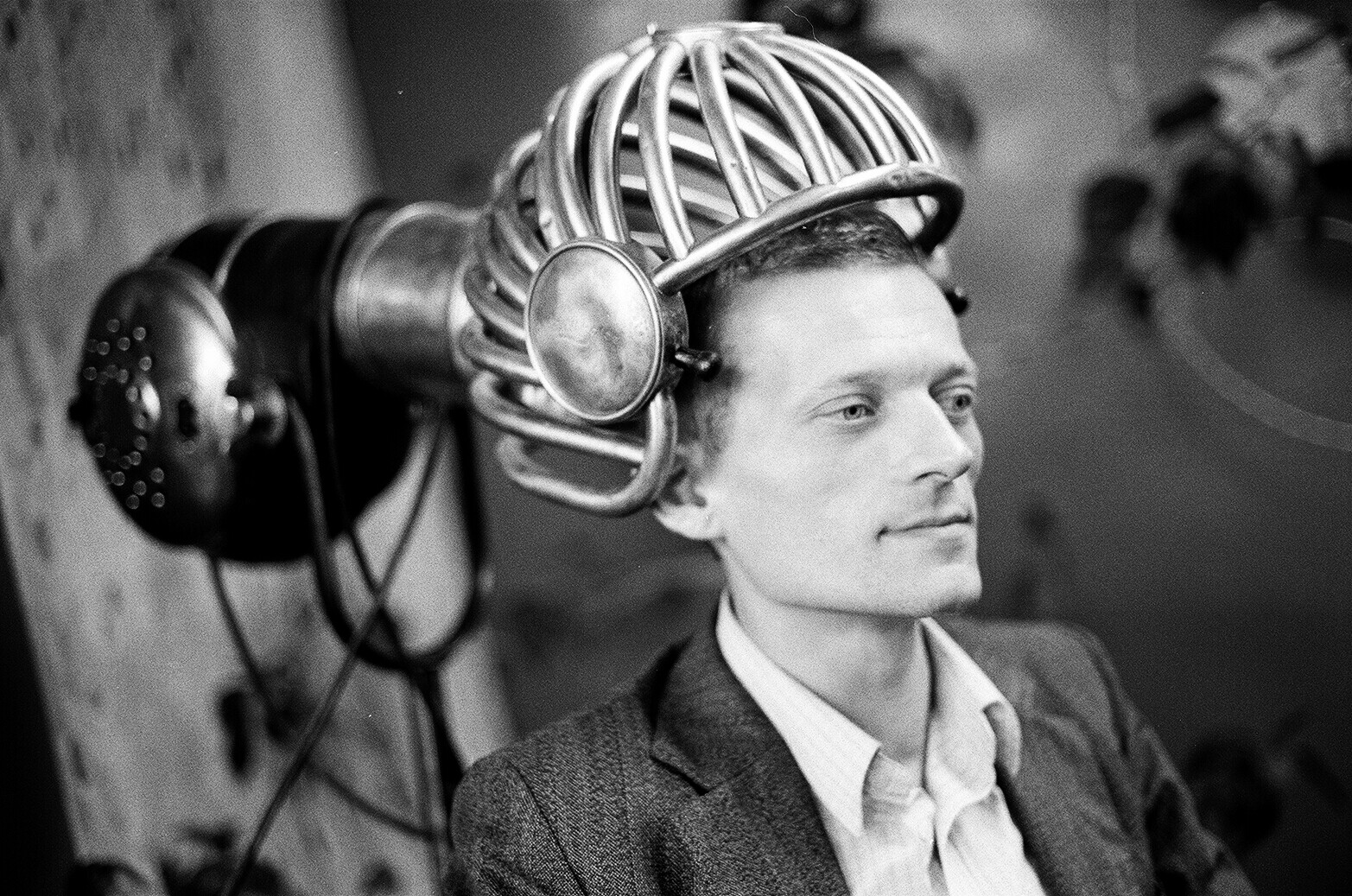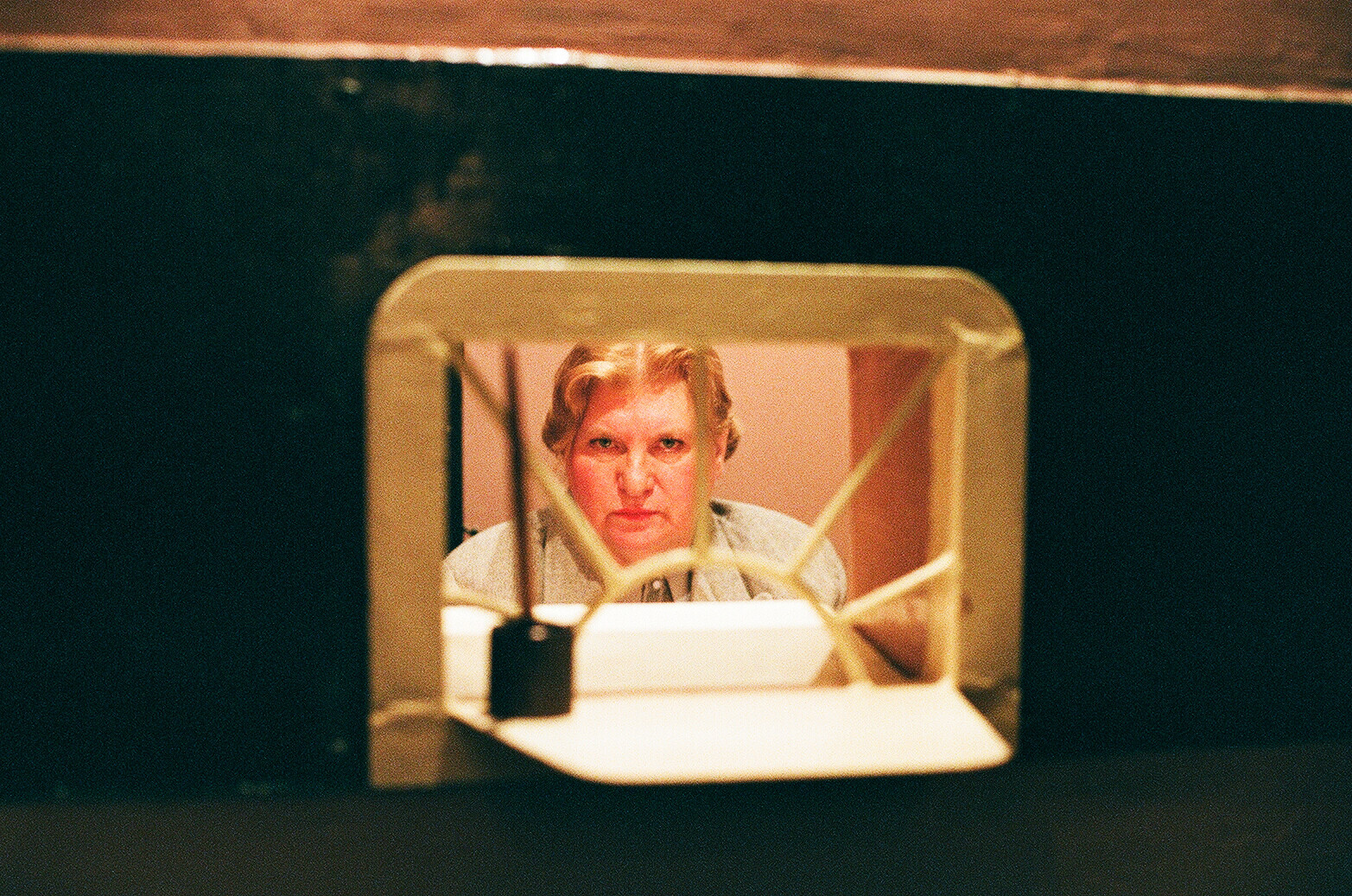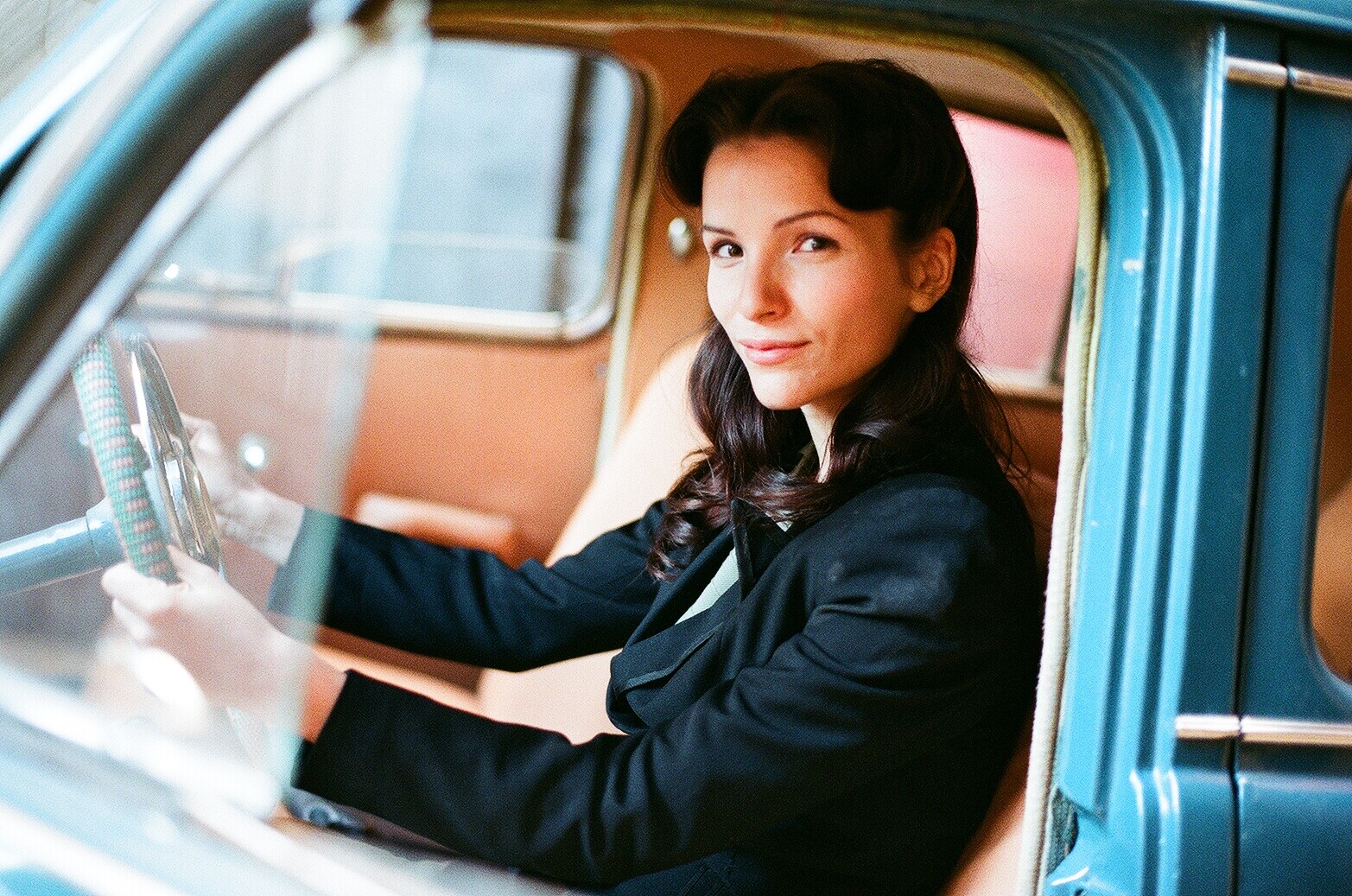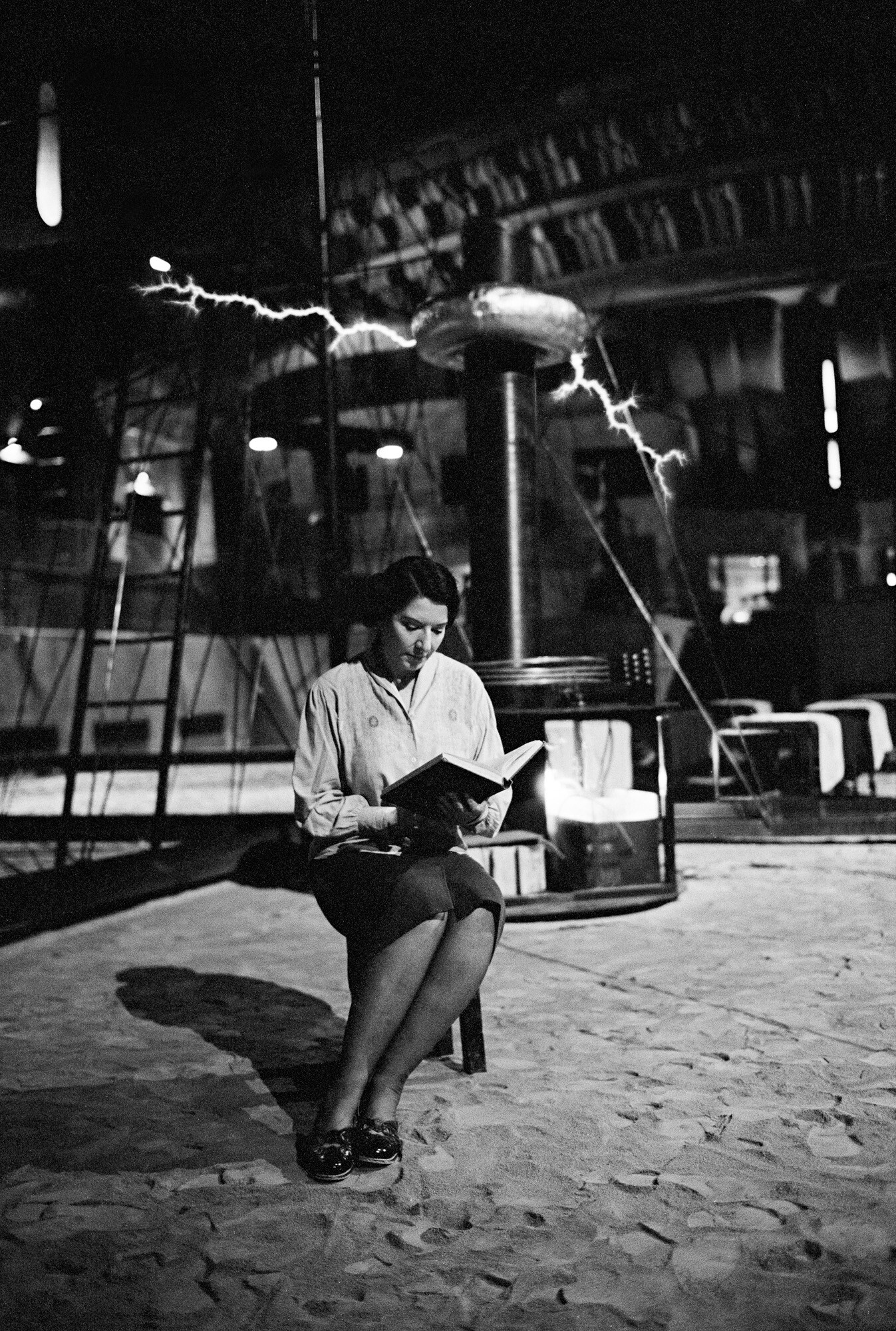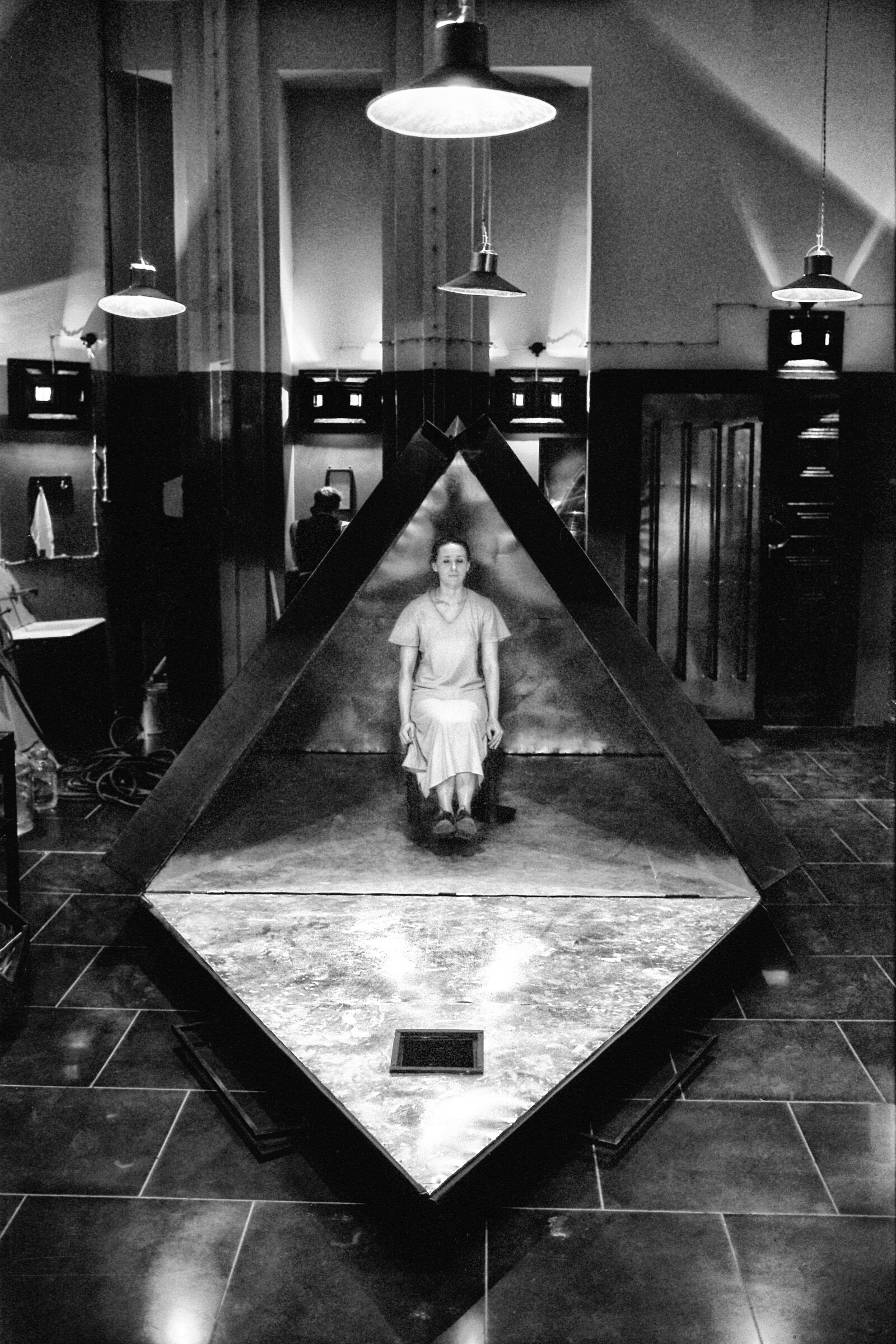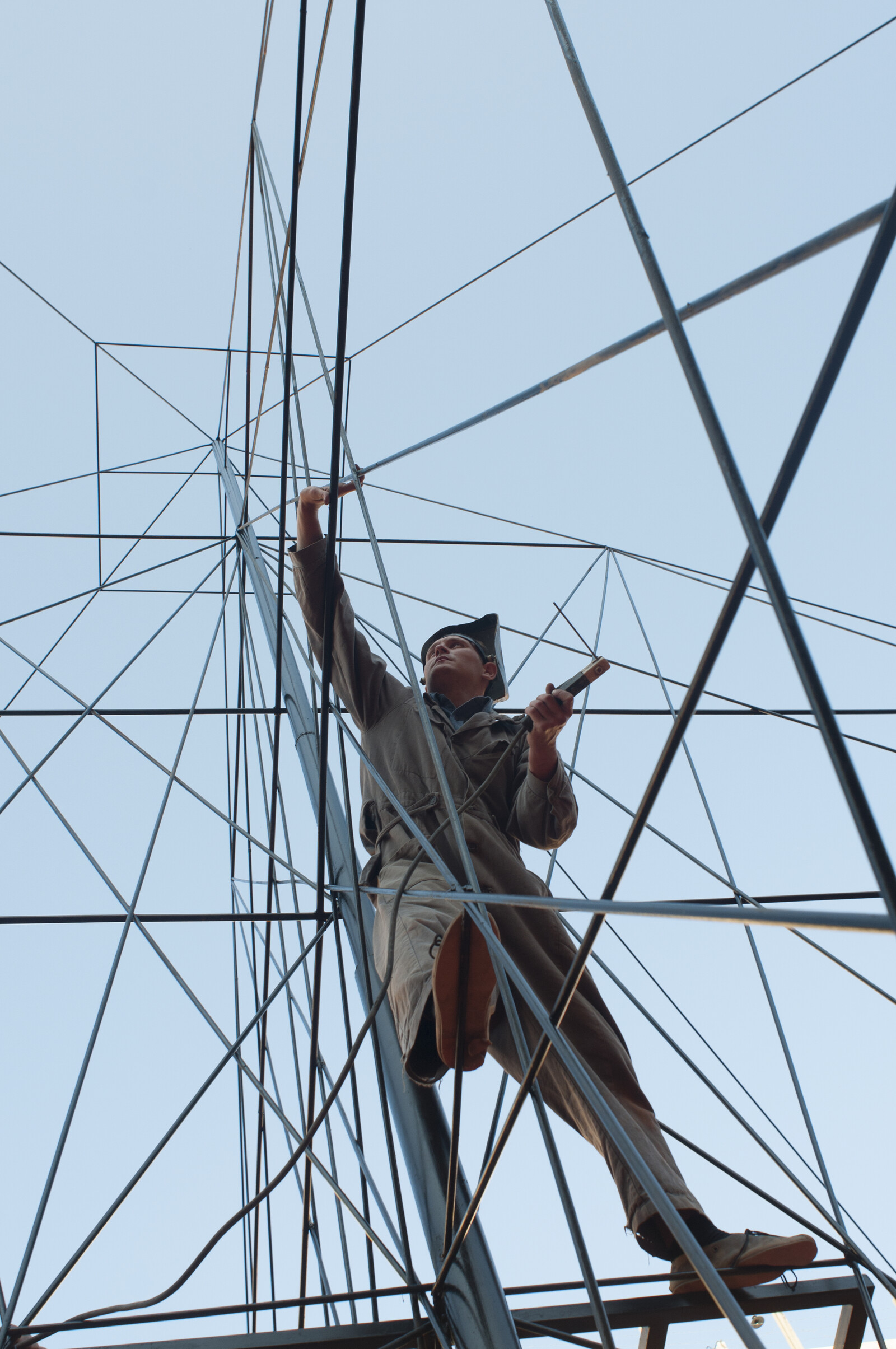Théâtre du Châtelet, Paris
Théâtre de la Ville, Paris
January 24, 2017–February 17, 2019
In 2009, the film director Ilya Khrzhanovsky resolved to expand DAU—a biopic of Soviet physicist Lev Landau, which he had been working on since the release of his feature film 4 (2004)—into a vast multimedia project. With the support of businessman Sergei Adon’ev’s Phenomen Trust, alongside a number of European film production companies, Khrzhanovsky constructed an entire campus in Kharkiv, Ukraine, modeled on a Soviet-era scientific research institute. He recruited dozens of participants to live on-site, for periods upward of two years, immersing themselves in the life of the institute and the material culture of the Soviet Union between the 1940s and ’60s. Blurring the boundaries separating fiction from everyday life, these performers lived their roles before a camera, resulting in over 700 hours of footage, which has now been edited into 13 feature-length films running, in total, more than 30 hours (the films are numbered, without individual titles, and dated 2019). Available evidence suggests that most dialogue and at least some of the action was improvised, thus also blurring the boundaries separating film from other visual and performance media (the closest analogue that springs to mind is Matthew Barney’s “Cremaster Cycle,” 1994–2002). The director’s inconsistent and self-aggrandizing PR has built anticipation, while also sowing doubt about the project’s shape and wisdom. DAU’s multimedia “multiverse” was supposed to open in Berlin in the fall of 2018, but it did not, thus adding to its legend as an impossible spectacle in the grand Russian tradition of Alexander Scriabin’s Mysterium (left incomplete—possibly not even begun—at the time of his death in 1915) or Ilya Kabakov’s total installations.
As it finally opened, in Paris, on January 24 2019, DAU was dispersed across three neighboring locations: first the installation of a Soviet scientist’s apartment at the Centre Pompidou, then far larger presences at Théâtre de la Ville and Théâtre du Châtelet, both of which opened with varying delays. To receive a “visa,” visitors first completed an online questionnaire assessing their passions and anxieties and received a laminated card providing around-the-clock access to the sites. They were told that they would also receive a mobile device with a customized itinerary, but 10 days into the run this was not (yet) the case. Instead, there was a schematic conceptual map that matched, sometimes in elusive ways, the physical arrangement of the sites, leading visitors (in the Théâtre du Châtelet) from addiction to utopia, and (in the Théâtre de la Ville) from maternity to communism. Insofar as the films were shown in various locations at unpredictable times, it was impossible to follow any kind of sequence, but it was not clear whether this compromised or fulfilled the design. Apart from the 13 long films, unedited material was displayed in individual booths with reflective surfaces, arrayed in irregular rows that formed halls of distorting mirrors. Visitors could also recline in Soviet-themed cafes serving tinned fish and vodka, and purchase faux-Soviet goods at the gift shop.
Somewhat discordantly, the spaces were also dotted with work by late-Soviet and post-Soviet artists, including Sergei Bugaev and Grisha Bruskin, as well as by life-like mannequins of the characters in the films. Lacking a comprehensive guide or schedule, for complete appreciation of the project visitors would need to spend the entire three-week run exploring, watching, listening to, and experiencing everything on offer. (For the record, I spent approximately 13 hours in the three spaces, viewed two films in their entirety and several more in significant part, and witnessed a number of performances.) Intended or not, the inevitable frustration of the visitor’s comprehension mimicked the effect of the Soviet Union as a vast experiment in sublimating individual desire into extreme acts of labor—in this case visitors’ endless aesthetic labor.
In their aesthetic demands, the DAU films equivocate between hyperrealism and expressionism. The action mostly dwells on how the scientists’ quest for progress conceals—and is thwarted by—violent forces of ideological control and sexual domination. Almost despite myself, I was gradually drawn into certain characters and narrative threads. Characters seem to age on screen, often quite persuasively, and far beyond the two- or three-year span that the performers supposedly stayed in residence. I suspect that some DAU-dwellers or DAU-inmates might have been drinking heavily. But the films’ immersive quality is constantly undermined by the jerky handheld camera (credited to the accomplished cinematographer Jürgen Jürges) that probes each scene dynamically, at the cost of uneven focus, lighting, and sound quality. Long takes are punctuated with disorienting jump cuts. The result is like a reality TV show that has been allowed to expand into a long-running soap opera. The reality effect is further undercut by eccentric staging (tons of crockery must have been smashed in the tedious and interminable domestic and workplace fights), the inconsistent periodization of sets and props, anachronistic speech, and lead performer Teodor Currentzis’s shaky grasp of Russian grammar and vocabulary (in real life he is a conductor of Greek origin). Despite the films’ almost addictive quality, these stylistic discrepancies constantly awaken us back to where we actually are—watching mediocre, self-important movies in a kitschy Soviet theme park.
Though it purports to replicate Soviet experience, DAU really enacts the revenge of what Soviet discourse sublimated, at least in its public manifestations. As an aesthetic strategy, this eruption of what was previously suppressed is familiar from bleak late- and post-Soviet cinema (known in Russian as chernukha), such as Kira Muratova’s Asthenic Syndrome (1990), and from the photography of Boris Mikhailov (who makes a cameo appearance in one of the films, as do Marina Abramović, Carsten Holler, and other celebrities). But DAU goes far beyond chernukha in the demands it makes on both participants and viewers. Brief scenes feature the on-screen dismemberment of animals, as well as the troubling use of human infants as subjects in a ludicrous experiment in, allegedly, engineering superhumans. Meanwhile, secret policemen (at least one of whom was played by an actual Soviet-era policeman reenacting his old practices, in an echo of Joshua Oppenheimer’s 2012 film The Act of Killing) violently and profanely attempt to coerce characters to become informers (some do, others don’t). One disconcerting thread features a notorious Russian neo-Nazi playing a version of himself: He chants the slogan “sport, health, socialism”; has graphic and aggressive sex with one of the buffet servers; and allegedly (in a film I did not see) sacks the institute in an orgy of violence. Each film I saw featured at least one scene of sexual violence, including one rape and one attempted rape. Visual evidence supports the director’s claims that the sex scenes—and at least some scenes of sexual violence—were not simulated. The overall effect might be likened to a world designed by Lars von Trier on one of his darker days; at times it seemed like a virtual gulag. But was I victim or jailor?
Perhaps what DAU proved best at, as a large-scale multimedia installation, was turning viewers’ disorientation and discomfort into pervading anxiety concerning their own roles in making the spectacle. The small installation at the Pompidou Centre—a horseshoe of rooms around a central viewing corridor—was inhabited by an actor, who looked and performed the part of a mouse trapped in a maze. Not only had I been turned into his voyeur; I felt like his torturer. Both in its films and in its physical installations, as performance and epic narrative, as a study of Soviet traumas and a warning about today’s, DAU forces its subjects to contend with the violence inherent in the operations of isolating, dissecting, and re-animating history whether as “science” or as “art,” which refuses to be anything other than life.

